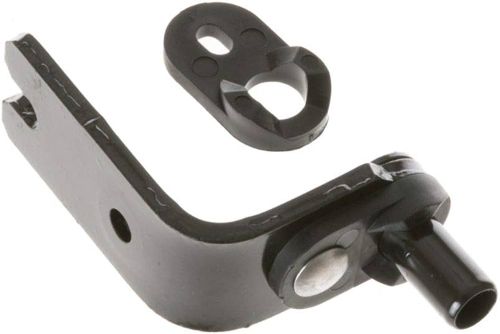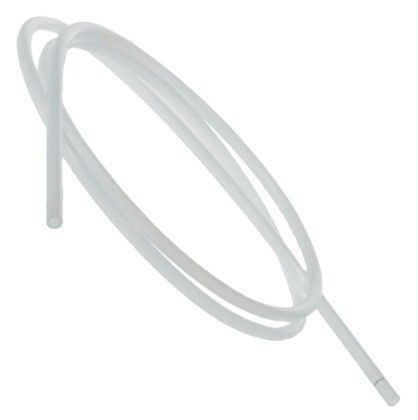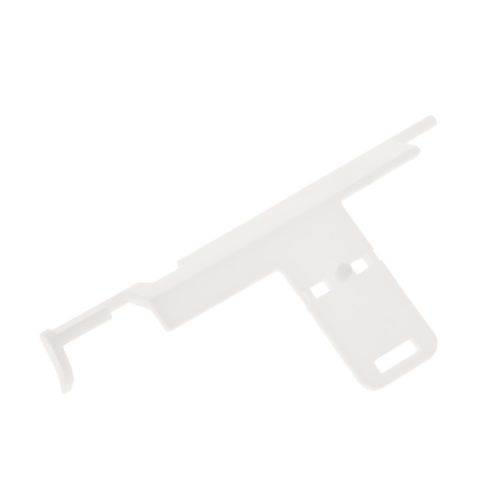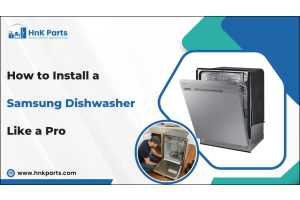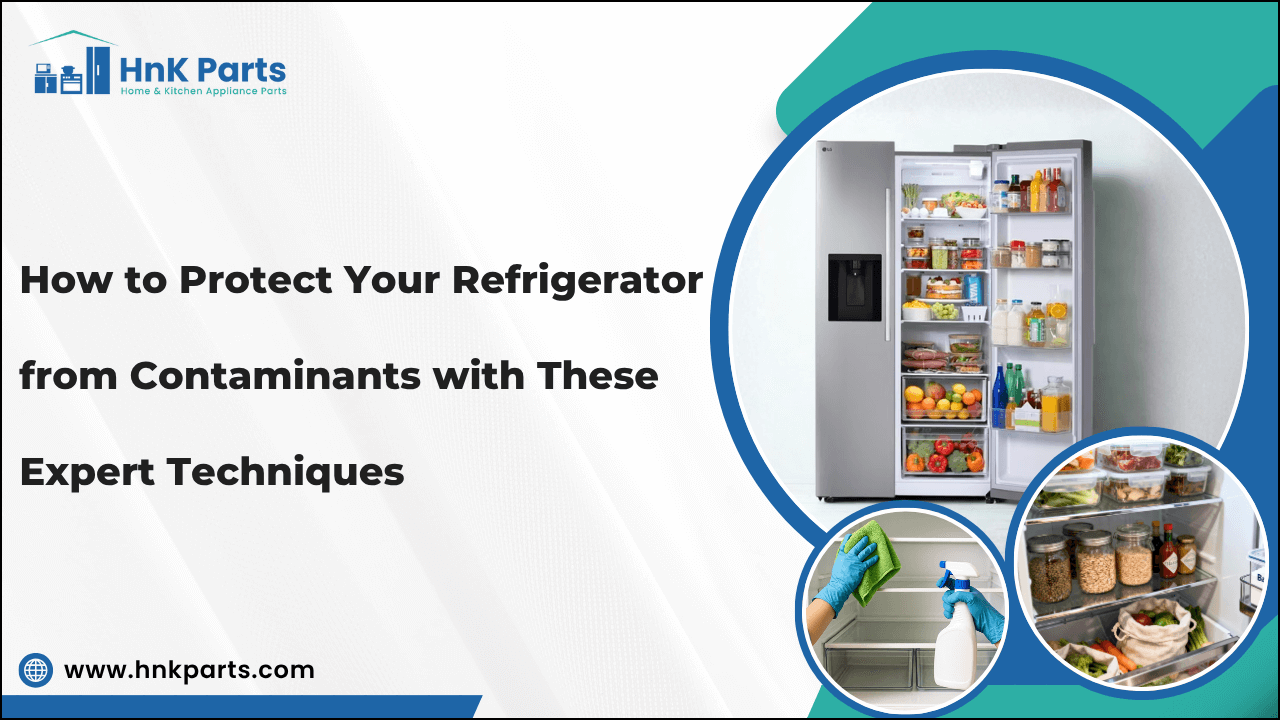
Refrigerator Hygiene 101: Proven Techniques to Keep Contaminants Away
A well-maintained refrigerator plays a critical role in protecting both family health and household efficiency. Proper refrigerator hygiene not only prevents foodborne illnesses but also ensures the appliance operates effectively and food lasts longer. Neglecting basic cleaning can allow bacteria to multiply, food to spoil quickly, and odors to spread throughout the unit. Beyond inconvenience, poor hygiene can lead to cross-contamination, mold growth, and even appliance malfunctions that may require costly repairs.
For American households, refrigerator maintenance should be seen as part of responsible home management. A clean, organized refrigerator reduces food waste, saves energy, and minimizes the risk of illness. By adopting a consistent cleaning routine and understanding how contaminants form, homeowners can safeguard their food, extend the appliance’s life, and maintain a hygienic kitchen environment that supports everyday health.
Understanding Refrigerator Contaminants and Their Risks
Refrigerators are designed to preserve freshness, but without proper hygiene, they can quickly become breeding grounds for harmful microorganisms.
-
Bacteria such as Salmonella, Listeria, and E. coli can multiply rapidly under favorable conditions, particularly when raw meats or unwashed produce are stored improperly. Mold spores also thrive in moist areas, especially around vegetable drawers, shelves, and door seals.
-
Cross-contamination is one of the most common sources of refrigerator-based contamination. When raw meat juices leak onto fruits, vegetables, or ready-to-eat items, bacteria can spread and compromise otherwise safe food. Odor-causing molecules from spoiled or forgotten leftovers can permeate packaging, affecting taste and freshness.
-
Problem areas often include door gaskets, vegetable crispers, and drip pans. The latter collects condensed water and food debris, creating an ideal environment for bacterial growth if ignored.
Regular attention to these zones significantly reduces contamination risks, ensuring safer food storage and extending the life of stored groceries.
Essential Daily and Weekly Refrigerator Hygiene Practices
Effective refrigerator hygiene begins with small, consistent actions. Developing daily and weekly habits prevents the buildup of grime and helps maintain a fresh, organized interior.
-
Daily tasks: Wipe up spills immediately, particularly those from fruits, vegetables, or raw meat. Even small drips can foster bacterial growth and odors if left untreated. Check the refrigerator door for fingerprints or sticky residues and clean using mild dish soap or disinfectant wipes.
-
Weekly tasks: Once a week, remove expired or spoiled foods and check produce drawers for wilted vegetables or overripe fruits. This practice reduces odors and prevents mold spread. Clean frequently touched surfaces, such as handles and external doors, to minimize germ transfer.
-
Verify temperature settings regularly: the refrigerator should remain between 37 and 40°F (3–4°C), and the freezer at 0°F (-18°C).
Use an appliance thermometer for accuracy. Avoid overloading the shelves; proper airflow maintains consistent cooling, preventing warm spots where bacteria can multiply.
Deep Cleaning Your Refrigerator: A Complete Step-by-Step Guide
A comprehensive deep clean should be performed every three to four months. This process removes stubborn contaminants and keeps your refrigerator running efficiently.
Step 1: Preparation
Unplug the refrigerator for safety and remove all food items. Store perishable items in a cooler with ice packs while cleaning.
Step 2: Disassemble & wash components
Take out all removable shelves, drawers, and racks. Wash them with warm, soapy water and rinse thoroughly. For tough residues, soak components for 10–15 minutes before scrubbing. Allow them to air-dry completely before reassembling.
Step 3: Clean the interior
Use a mixture of mild detergent and water to wipe down interior walls and compartments. For deep sanitization, apply a diluted bleach solution (1 tablespoon bleach per gallon of water). Rinse thoroughly with clean water to remove chemical residues.
Step 4: Address gaskets and seals
Door gaskets should be cleaned with a cloth dipped in warm, soapy water. Pay attention to crevices where crumbs and mold may accumulate.
Step 5: Exterior and coils
Clean door handles, control panels, and exterior surfaces. Slightly move the fridge forward and vacuum behind and underneath it, paying special attention to coils. Dust buildup can decrease cooling efficiency.
After cleaning, reassemble, restock food, and plug the refrigerator back in. Regular deep cleaning helps prevent long-term contamination and keeps it running efficiently.
Find How to Replace a Faulty Refrigerator Compressor: Easy & Quick Fix
Routine Inspection and Preventive Maintenance for Long-Term Hygiene
Routine inspection and preventive maintenance help identify potential issues before they become costly repairs. Every homeowner should perform a quick inspection at least once a month.
-
Door seals and gaskets: Check for cracks or loosened seals. A compromised gasket lets cold air escape, forcing the compressor to work harder and consume more energy. Replace damaged seals promptly.
-
Water and ice filters: Most modern refrigerators include filters for water dispensers and ice makers. Replace them every six months to prevent bacterial buildup and maintain water quality. Always follow the manufacturer’s recommendations.
-
Temperature monitoring: Place a small thermometer in both the fridge and freezer sections. Temperature fluctuations can indicate mechanical issues or blocked vents.
-
Condenser coils: Dust and pet hair can accumulate around refrigerator condenser coils, affecting energy efficiency. Vacuum or brush coils twice a year. This practice not only improves cooling but also extends compressor life.
-
Drain and drip pan: Clean and dry the drip pan periodically to prevent mold growth and odor formation. By incorporating these maintenance checks, homeowners maintain both hygiene and appliance reliability.
Smart Food Organization Tips to Prevent Cross-Contamination
An organized refrigerator is a cleaner refrigerator. Proper food placement minimizes cross-contamination and prolongs freshness.
-
Storage basics: Keep raw meats on the lowest shelf in sealed, leak-proof containers. This prevents drips from contaminating other foods. Store ready-to-eat meals and leftovers on upper shelves, and dairy products such as milk and cheese in the middle area, where temperatures are most stable.
-
Fruits and vegetables: Use separate drawers for fruits and vegetables. Fruits release ethylene gas that accelerates spoilage of nearby produce. Clean the drawers regularly to prevent mold growth caused by high humidity.
-
Containers and labeling: Store items in airtight containers to prevent odor transfer and bacterial spread. Label containers with storage dates, following a “first in, first out” rotation, and consume older items first.
-
Avoid Overcrowding: Leave enough space between food items to allow for air circulation. Overpacked shelves can create warm pockets, compromising food safety.
Organizing efficiently enhances not just hygiene but also convenience, allowing for quicker meal prep and reduced food waste.
Eliminating Odors and Boosting Refrigerator Hygiene Levels
Even with good cleaning habits, odors can sometimes develop inside the refrigerator. Addressing these promptly helps maintain freshness and ensures no underlying hygiene issues persist.
-
Odor prevention: Keep an open box of baking soda or a small container of activated charcoal inside the fridge to absorb unwanted smells. Replace these every one to three months for best results.
-
Drip pan and defrost areas: Regularly clean the drip pan located beneath the unit, as it can trap moisture and bacteria. If your appliance has a manual defrost freezer, perform a complete defrost periodically to eliminate ice buildup and odor sources.
-
Safe cleaning agents: Avoid harsh chemicals like ammonia or concentrated bleach. These can damage interior finishes or leave harmful residues. Use mild dish soap, white vinegar, or a gentle commercial cleaner approved for refrigerators.
-
Exterior hygiene: Don’t neglect handles, door edges, and control panels. Wipe these high-touch areas frequently using disinfectant wipes, particularly during cold or flu seasons.
Following these odor control measures ensures your refrigerator stays fresh-smelling and sanitary, enhancing both food quality and appliance longevity.
Costly Refrigerator Hygiene Mistakes to Avoid
Maintaining a hygienic refrigerator requires awareness of common pitfalls. Avoid the following mistakes:
|
Mistake |
Description |
|
Ignoring expiration dates |
|
|
Using harsh cleaners |
|
|
Neglecting door seals |
|
|
Overcrowding shelves |
|
|
Skipping drip pan cleaning |
|
9 Refrigerator Problems & Proven Fixes You Need to Know
Final Thoughts: Maintaining a Clean and Safe Refrigerator
Refrigerator hygiene is not a complicated process, but it requires regular attention and discipline. Small, consistent efforts, like wiping spills, organizing food properly, and monitoring temperature, can prevent major health risks and save repair costs.
For American households, maintaining refrigerator cleanliness supports both food safety and sustainability by reducing waste. By developing a schedule for cleaning, inspection, and organization, homeowners can keep contaminants away and ensure their refrigerators remain reliable and safe. HnK Parts offers a wide range of high-quality refrigerator parts & accessories, from motors to compressors and gaskets to door seals, compatible with top brands such as Whirlpool, LG, and Samsung.
References:
https://www.nutrition.gov/topics/food-safety/safe-food-storage
https://www.fsis.usda.gov/food-safety/safe-food-handling-and-preparation/food-safety-basics/refrigeration
FAQs
Can I use a regular household all-purpose cleaner to clean the inside of the refrigerator?
It's best to avoid strong chemical or fragranced all-purpose cleaners inside the food-storage area. Many recommend using mild dish soap, warm water, or a vinegar/baking soda solution to avoid leaving residues that could transfer to food surfaces.
How long after a power outage should I discard the food in the refrigerator to avoid contamination?
After a power outage, perishable food in the main refrigerator compartment is safe if the temperature has remained at or below 4 °C (40 °F) and the outage lasted less than about 4 hours with the door closed. If the outage extends longer or food has risen above a safe temperature, it’s best to discard perishables like meats, dairy, and cooked leftovers to avoid the risk of bacterial growth.


